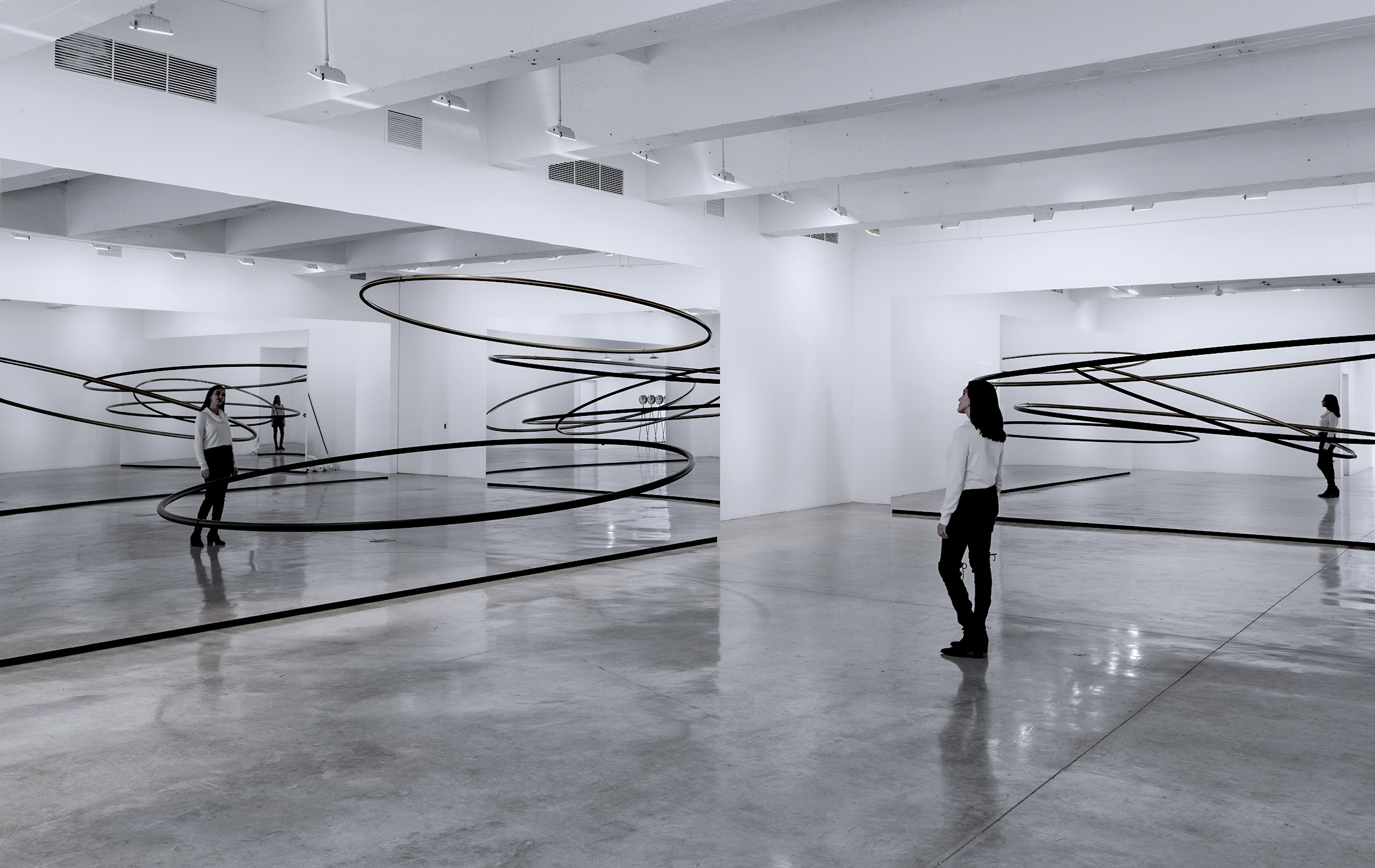In 2003, Olafur Eliasson unveiled his remarkable art installation, The Weather Project, at the Tate Modern in London. This awe-inspiring project transformed the museum’s expansive hall into a captivating and immersive environment. Through the ingenious use of humidifiers and a unique combination of sugar and water, Eliasson created a delicate mist that permeated the air, creating an ethereal atmosphere. Complementing this mist was a semi-circular disc comprised of countless monochromatic lamps, emanating a warm and inviting yellow light.
One of the most striking features of The Weather Project was the enormous mirror that covered the ceiling of the hall. This mirror reflected the entire installation, casting a mesmerizing reflection that allowed visitors to see themselves as tiny black shadows amidst a sea of vibrant orange light. The mirror added a surreal dimension to the experience, blurring the boundaries between reality and illusion.
The public’s response to The Weather Project was overwhelming. Visitors were drawn to the installation’s immersive nature, often finding themselves lying on their backs and waving their hands and legs in an attempt to interact with the mesmerizing atmosphere. This active engagement with the artwork showcased the profound impact it had on its audience.
Over the course of six months, The Weather Project captivated the imaginations of millions, attracting an astonishing two million visitors. Its popularity was a testament to the power of Eliasson’s artistic vision and his ability to create an immersive experience that resonated deeply with people from all walks of life.
The Weather Project transcended the traditional boundaries of art and challenged the conventional notions of what an art installation could be. By blending elements of nature, light, and reflection, Eliasson crafted an environment that enveloped visitors in a sensory journey, evoking emotions and provoking contemplation. The installation served as a reminder of our connection to the natural world and our place within it.
Beyond its artistic significance, The Weather Project also exemplified the potential of art to bring people together. The shared experience of witnessing and interacting with the installation fostered a sense of community and sparked conversations among visitors. It served as a catalyst for dialogue and a source of inspiration for countless individuals.
In conclusion, Olafur Eliasson’s The Weather Project stands as a testament to the transformative power of art. Through the ingenious use of light, mist, and reflection, Eliasson created an immersive environment that captivated millions of visitors at the Tate Modern. The installation’s ability to evoke emotions, provoke contemplation, and foster a sense of community made it a truly remarkable and memorable experience. The Weather Project serves as a shining example of the profound impact that art can have on both individuals and society as a whole.



